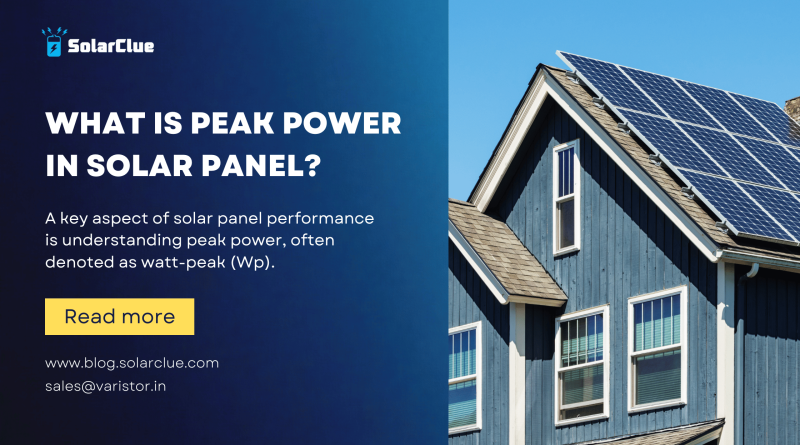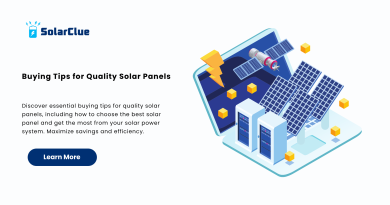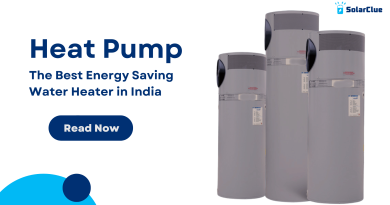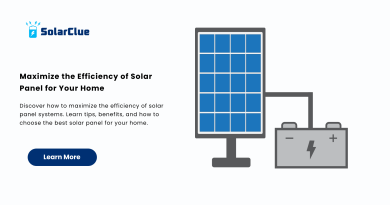What is Peak Power in Solar Panel?
As the world shifts towards renewable energy sources, solar power has emerged as a leading option for sustainable energy production. A key aspect of solar panel performance is understanding peak power, often denoted as watt-peak (Wp). This blog delves into the concept of peak power, its significance, and practical tips to maximize it for optimal solar energy production.
Table of Contents
- 1 What is Watt-Peak (Wp)?
- 2 Measuring Peak Power
- 3 Comparing Peak Power of Different Solar Panel Types
- 4 The Role of Peak Power in Calculating Energy Production
- 5 Optimizing Peak Power Through Panel Orientation and Tilt
- 6 The Impact of Shading on Peak Power
- 7 Relationship Between Peak Power and Other Solar Panel Specifications
- 8 Practical Tips for Maximizing Peak Power Output
What is Watt-Peak (Wp)?
Watt-peak (Wp) is a standard measure of a solar panel’s maximum power output under ideal conditions, including optimal sunlight and temperature. It provides a benchmark to compare the potential power production of different solar panels. Wp is measured under Standard Test Conditions (STC), which include a solar irradiance of 1000 watts per square meter, a cell temperature of 25°C, and an air mass of 1.5.
Significance of Peak Power in Solar System Design
Peak power plays a crucial role in designing a solar system as it determines the overall capacity of a solar array. By understanding the Wp of individual panels, designers can calculate the total output of a solar system, ensuring it meets the energy needs of a particular application.
Factors Influencing Peak Power Performance
Solar Irradiance
Solar irradiance, the power per unit area received from the Sun, significantly impacts peak power. It varies geographically and seasonally, affecting the amount of sunlight that reaches solar panels. Areas with higher solar irradiance will typically produce more peak power.
Temperature
Temperature affects solar panel efficiency and peak power. As temperature increases, the efficiency of solar panels generally decreases due to increased resistance in the electrical components. The temperature coefficient indicates how much the power output of a panel decreases for each degree Celsius increase in temperature.
Panel Efficiency
Solar panel efficiency refers to the percentage of sunlight that is converted into usable electricity. Higher efficiency panels produce more power per square meter, increasing the peak power output. Advances in technology continually improve panel efficiency, making it a critical factor in peak power performance.
Measuring Peak Power
Peak power is measured under Standard Test Conditions (STC) to provide a consistent basis for comparison. However, real-world conditions often differ from these laboratory settings. Factors like dust, shading, and varying temperatures can impact actual performance, making it essential to consider real-world conditions when assessing peak power.
Comparing Peak Power of Different Solar Panel Types
Monocrystalline vs. Polycrystalline vs. Thin-Film
Different types of solar panels offer varying peak power outputs. Monocrystalline panels, known for their high efficiency, typically have higher Wp ratings compared to polycrystalline and thin-film panels. Polycrystalline panels are slightly less efficient but offer a good balance of performance and cost. Thin-film panels, though less efficient, can be advantageous in specific applications due to their flexibility and lower cost.
The Role of Peak Power in Calculating Energy Production
To estimate the daily and annual energy production of a solar system, one can use the Wp rating along with local solar irradiance data. Tools and formulas, such as the photovoltaic (PV) power output calculator, help predict the energy yield based on peak power and environmental factors.
Optimizing Peak Power Through Panel Orientation and Tilt
Proper orientation and tilt of solar panels are crucial for maximizing peak power. Panels should be oriented to capture the maximum amount of sunlight throughout the day, typically facing true south in the Northern Hemisphere. The optimal tilt angle varies with latitude and season, requiring adjustments to achieve the best performance.
The Impact of Shading on Peak Power
Shading significantly reduces the peak power output of solar panels. Even partial shading can lead to substantial power losses. To minimize shading impact, it’s essential to place panels in areas free from obstructions like trees, buildings, and other structures. Using micro-inverters or power optimizers can also help mitigate shading effects.
Relationship Between Peak Power and Other Solar Panel Specifications
Voltage and Current
Peak power is a product of the voltage and current generated by a solar panel under STC. The IV curve of a panel, which shows the relationship between current and voltage, helps in understanding how these factors contribute to peak power.
Fill Factor (FF)
The fill factor (FF) is a measure of a solar panel’s efficiency, defined as the ratio of the actual maximum obtainable power to the theoretical power (the product of open-circuit voltage and short-circuit current). A higher fill factor indicates a more efficient solar panel, contributing to higher peak power.
Practical Tips for Maximizing Peak Power Output
1. Regular Maintenance and Cleaning: Keeping solar panels clean and free from debris ensures maximum sunlight absorption and optimal performance.
2. High-Quality Inverters and MPPT Technology: Using efficient inverters and Maximum Power Point Tracking (MPPT) technology helps in converting the maximum amount of solar energy into usable electricity.
3. Optimal Installation Conditions: Ensuring that panels are installed in locations with minimal shading and optimal orientation and tilt enhances peak power output.
Conclusion
Understanding and optimizing peak power is crucial for maximizing the performance of solar panels. By considering factors like solar irradiance, temperature, panel efficiency, and installation conditions, one can significantly enhance the energy yield of a solar system. As solar technology continues to advance, improvements in peak power performance will contribute to more efficient and sustainable energy solutions.
Here at SolarClue®, we offer a smart, practical, and “beautiful” solution. You will be answered for all the questions related to Solar.
We provide all kinds of brands that are the Best Solar panels in India.
If you are the one who is planning for the solar power system. Don’t hesitate to contact our team!
Looking forward to empowering you with solar energy, just like hundreds of our other clients!
FAQs
1. What is the difference between peak power and actual power output?
Peak power is the maximum power output under ideal conditions, while actual power output varies based on real-world conditions like weather, shading, and temperature.
2. How can I increase the peak power of my existing solar panel system?
Ensure regular maintenance, optimize panel orientation and tilt, and use high-quality inverters and MPPT technology.
3. Are there any solar panels that perform better in low-light conditions?
Yes, thin-film solar panels and some advanced monocrystalline panels are designed to perform better in low-light conditions.
4. How does dust and dirt affect the peak power of solar panels?
Dust and dirt reduce the amount of sunlight that reaches the solar cells, decreasing the peak power output. Regular cleaning helps maintain optimal performance.
5. What are some advanced technologies that improve peak power performance?
Technologies like bifacial panels, PERC (Passivated Emitter and Rear Cell) technology, and improved anti-reflective coatings enhance peak power performance.




